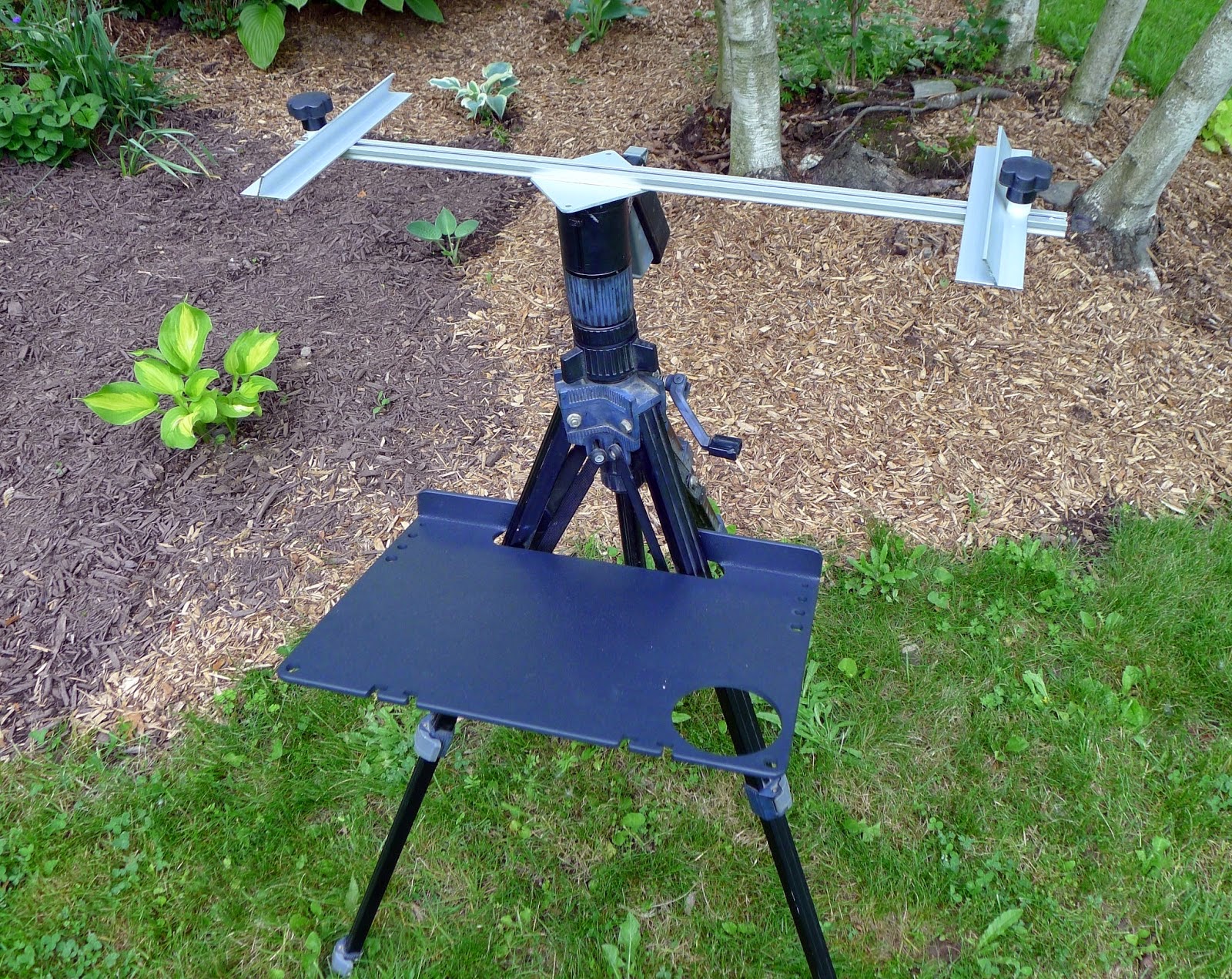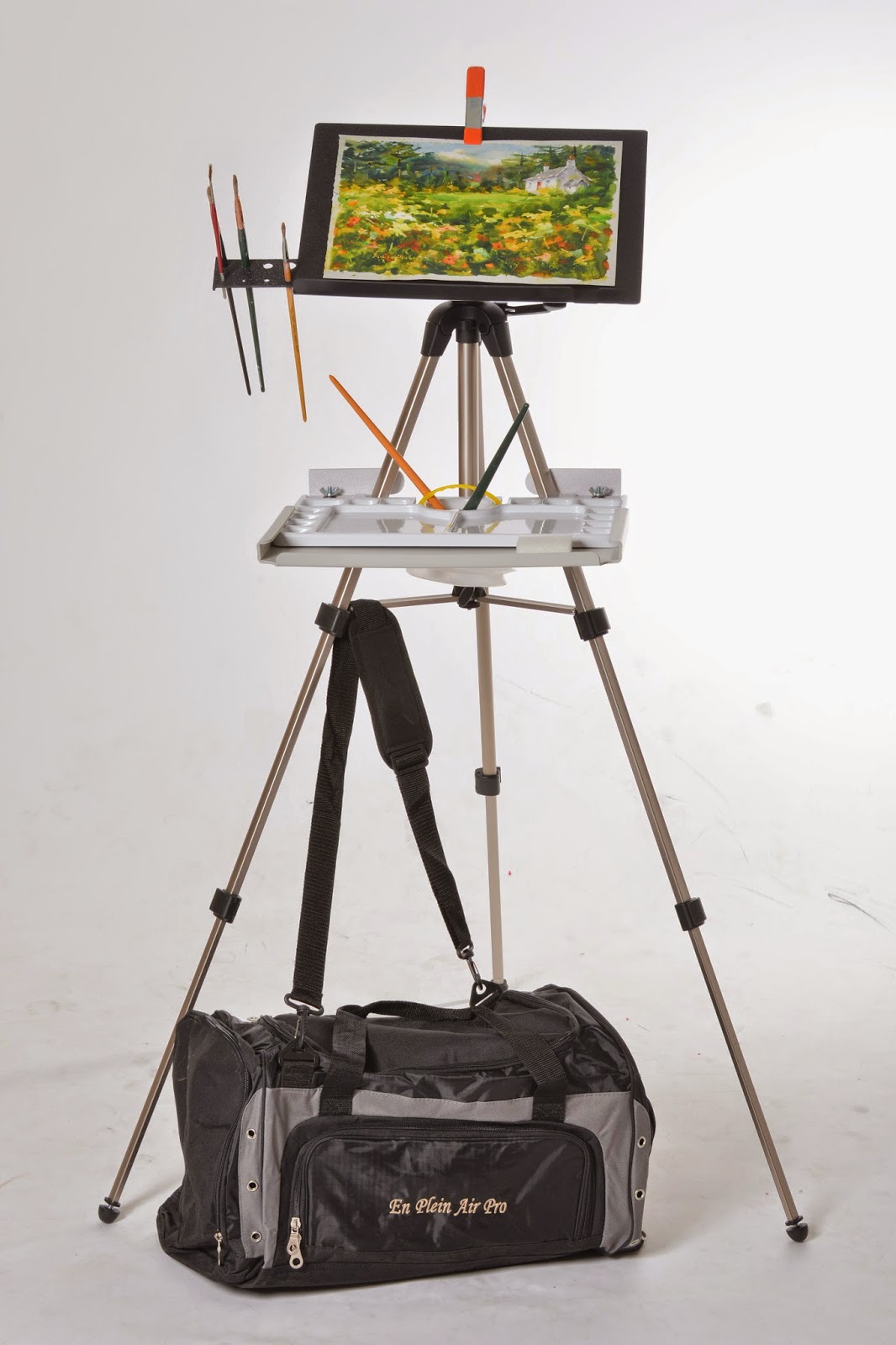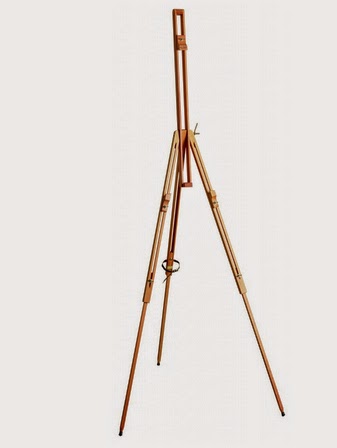 |
| My own contraption, easily assembled from off-the-shelf parts. It functions equally well for oils and watercolors. |
This weekend I got a letter from a southern California watercolor artist asking about field easels. I’ve written a lot about oil-painting easels but very little about watercolor easels. However, the same fundamental rule applies: there is no single “right” easel for every person and every situation.
 |
| En plein air pro watercolor easel. |
For me, a movable mast is an important consideration for watercolor, because I want my work surface to be able to go almost flat for washes. One commercial easel with that flexibility is the
Anderson Swivel Easel. The trade-off for lighter weight in aluminum field easels is that they can be flimsy compared to their wooden counterparts, but this is a good alternative to a wooden box-style easel. At 5’6”, I find it to be slightly too short for me to work standing. But if you work from a seated position, the small storage area and slightly shorter profile will pose no great problems.
 |
| Anderson Swivel Easel |
I made myself
a heavy-duty variation, using a
mastfrom Guerrilla Painter, a shelf from
En Plein Air Pro, and a ball-head tripod I had from back in the days when we used real cameras. This is the workhorse easel in my collection—it is virtually indestructible, very stable and easy to adjust. And there’s no assembly needed: just buy the parts and put them together. If you already have a good tripod, you can assemble this easel for less than $120.
 |
| Mabef beechwood field easel has a pivoting head. Mine has been amazingly durable and is the first easel I grab for new painting students to try. |
The trouble is, it’s quite heavy. That’s no problem for painting from the back of your car, but if you let your friends talk you into long hikes, it’s just too much. For a truly lightweight easel, I’d look at
En Plein Air Pro’s line. As I noted above, the trade-off for their light weight is that they are less able to endure the shocks of truly extreme
plein air painting.
I also have a
Mabef field easel, which is an economical answer to the pivot-head problem for watercolor artists. Its major downside is that you need to bring a table with you, but it’s my most useful teaching easel, and has outlasted a lot of fancier alternatives. While the head doesn’t pivot 360°, it can be turned flat, and that’s enough for most applications.
Message me if you want information about next year’s classes and workshops.




